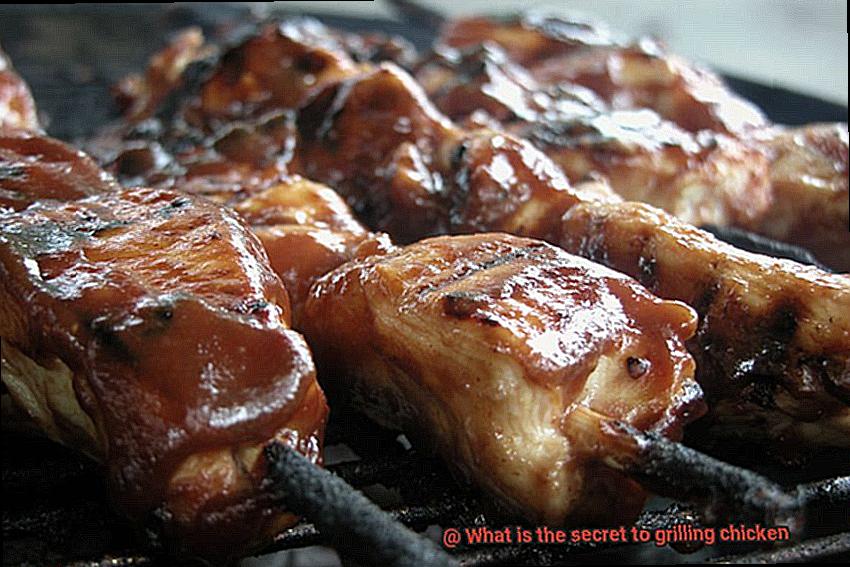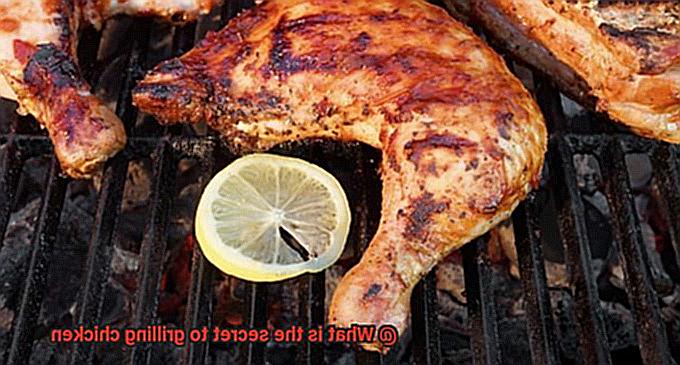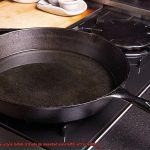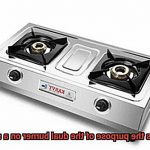Summertime and grilling chicken go hand in hand. Whether you’re a grill aficionado or just starting out, perfectly grilled chicken is a must-have for any backyard barbecue or family get-together. But what’s the secret to achieving juicy, flavorful meat every time?
Some say it’s all about the marinade or seasoning, while others swear by a specific grilling technique. But the truth is that the secret to grilling chicken lies in combining these factors with some additional tips and tricks to ensure success.
In this blog post, we’ll explore the world of grilling chicken, from various marinades and seasoning blends to cooking methods that will take your chicken game to new heights. We’ll also discuss how to properly prep and handle chicken so you can avoid any food safety concerns.
Whether you prefer traditional BBQ flavors or experimental marinades, this post has got you covered. Get ready to become a master of grilling chicken and impress your friends and family at your next summer gathering.
Contents
Cleaning and Seasoning the Chicken
Grilling chicken is a culinary art, and it all begins with the proper cleaning and seasoning of the meat. These steps are essential for achieving perfectly grilled chicken that is juicy, flavorful, and safe to eat. Let’s delve deeper into these crucial steps.
Cleaning the chicken is the first step towards ensuring food safety. Raw chicken can harbor harmful bacteria like Salmonella or Campylobacter, which can lead to food poisoning. Therefore, it’s essential to rinse the chicken under cold water and remove any excess fat, feathers, or debris. Careful handling of raw chicken is also necessary to avoid cross-contamination with other foods.
Once the chicken is clean, it’s time to add some zing to its taste buds. There are two primary ways to season chicken: dry rubs and marinades.
A dry rub is a mixture of dried herbs, spices, and salt that is evenly applied over the chicken. This can be done right before grilling or up to 24 hours beforehand. A dry rub can impart a variety of flavors to the meat, from smoky to spicy to sweet.
Marinating the chicken involves soaking it in a mixture of oil, acid (such as vinegar or citrus juice), and herbs and spices. This method not only adds flavor but also helps tenderize the meat. Marinating times can vary from a few hours to overnight depending on the recipe.
It’s imperative not to over-season the chicken as it can overpower the natural taste of the meat. Simple seasoning of salt and pepper can also enhance the flavor of grilled chicken.
Preheating the Grill
Then preheating your grill is the crucial first step you need to take. By understanding the type of grill you’re using, you can ensure that your chicken cooks evenly, doesn’t stick to the grates, and has that delicious charred flavor.
Let’s start with gas grills. To preheat a gas grill, turn the burners on high for at least 10-15 minutes before placing the chicken on the grates. This allows the grill grates to heat up to the optimal temperature of 450-500°F. Remember to close the lid during this process to trap the heat inside and create a convection effect that cooks the chicken evenly. Patience is key here – rushing the preheating process can result in unevenly cooked chicken.
Now, let’s move on to charcoal grills. Preheating a charcoal grill involves lighting the charcoal and waiting until it turns white-hot before placing the chicken on the grates. This process can take between 20-30 minutes, depending on how much charcoal you use and your desired cooking temperature. It’s crucial to spread out the coals evenly and arrange them in a two-zone fire configuration, with one side of the grill hotter than the other. This setup allows you to sear the chicken over high heat before moving it over to the cooler side of the grill to finish cooking for juicy, flavorful results.
Regardless of whether you’re using a gas or charcoal grill, preheating is an essential step that should never be skipped. Skipping this step can result in poorly cooked chicken that sticks to the grates, making it difficult to flip and remove without leaving some behind.
Timing is Key
Grilling chicken can be a challenge, but the key to a perfect dish is all about timing. Overcooking can cause dry and tough meat, while undercooking poses a risk of food poisoning. Thus, it’s essential to get the timing right.
Firstly, consider the thickness of your chicken. Thicker cuts require more time on the grill than thinner ones. Boneless chicken breasts will take approximately 6-8 minutes per side on medium-high heat, while drumsticks can take up to 15 minutes per side. Always ensure that the internal temperature of your chicken reaches 165°F for safe consumption.
Direct or indirect heat also plays a significant role in timing. Direct heat is ideal for thinner cuts of chicken, while thicker cuts benefit from indirect heat on a cooler part of the grill with the lid closed.
Marinating your chicken before grilling can impact timing as well. Acid-based marinades tenderize meat and shorten cooking time, while sweet marinades burn quickly due to their high sugar content. Keep an eye on your chicken to avoid burning or undercooking.
Use a Meat Thermometer
Attention grill masters. Want to take your grilled chicken to the next level? Look no further than the meat thermometer. No more guessing games, no more dry chicken, and no more safety concerns. Here’s why using a meat thermometer is essential for grilling chicken:
- Perfect doneness: Forget judging by color or texture – a meat thermometer gives you an accurate reading of the internal temperature and ensures your chicken is cooked to perfection every time.
- Safety first: Undercooked chicken can pose a health risk, but overcooked chicken can also be unappetizingly dry. A meat thermometer takes the guesswork out of cooking chicken to a safe internal temperature of at least 165°F (74°C) without sacrificing flavor or moisture.
- Quality control: Dry and flavorless chicken is a thing of the past. With a meat thermometer, you can cook your chicken to the perfect level of doneness, resulting in juicy and delicious meat every time.
Using a meat thermometer is easy – simply insert it into the thickest part of the chicken without touching bone or gristle. After each use, clean your thermometer to prevent any cross-contamination.
But wait, there’s more. Meat thermometers come in different types, so choose one that suits your needs and budget. Digital thermometers are accurate and easy to read, while analog thermometers offer a traditional touch and may require calibration.
Letting the Chicken Rest After Cooking
The secret lies in letting your chicken rest after cooking.
When you grill chicken, the heat forces the juices to move towards the center of the meat. If you cut into it right away, all those juices will escape, leaving you with dry and unappetizing meat. Give your chicken a chance to rest for 5-10 minutes, and those juices will redistribute throughout the meat, making it moist and tender.
Letting your chicken rest also allows the flavors to meld together, resulting in a more delicious final product. Plus, it gives you time to make sure your chicken is cooked all the way through, ensuring safety for you and your guests.
So how do you properly rest your grilled chicken? First, remove it from the grill and place it on a clean cutting board or platter. Then tent it loosely with foil to keep it warm and let it rest for at least 5-10 minutes before slicing or serving. But be careful not to cover the chicken too tightly or wrap it in plastic, as this can cause moisture to build up and make the skin soggy.
In summary, here are some key takeaways:
- Letting your chicken rest allows juices to redistribute throughout the meat, resulting in juicier and more tender meat.
- It also allows flavors to meld together for a more delicious final product.
- Resting time gives you a chance to check that your chicken is cooked all the way through.
- Proper resting technique involves placing the chicken on a clean cutting board or platter and tenting it loosely with foil.
- Don’t cover the chicken too tightly or wrap it in plastic.

Tips for Perfectly Grilled Chicken Every Time
Grilling chicken is a great way to enjoy a warm summer evening, but getting it just right can be a challenge. With these tips, you’ll be able to achieve perfectly grilled chicken every time.
Proper Preparation
Preparing your chicken properly is crucial to achieving that delicious and juicy flavor. Start by trimming off any excess fat or skin and marinating the chicken for at least an hour, if not overnight, in a flavorful marinade. This can help infuse the meat with delicious flavors and tenderize it.
Preheat Your Grill
Before adding your chicken to the grill, ensure that the grill is properly preheated to medium-high heat. This will help cook the chicken evenly and prevent sticking. You can also lightly oil the grates to further prevent sticking.
Use Indirect Heat
When grilling chicken, it’s important to use indirect heat rather than placing it directly over the flames. This can help prevent flare-ups and ensure that the chicken cooks evenly without burning. Simply move the chicken to the cooler part of the grill and cover with a lid.
Check for Doneness
Monitoring the temperature of the chicken throughout the grilling process is essential to ensuring that it’s cooked through safely and deliciously. Use a meat thermometer to check that the internal temperature of the chicken has reached 165°F before removing it from the grill. You can also test for doneness by cutting into the thickest part of the chicken to check if the juices run clear.
Let Your Chicken Rest
After removing your chicken from the grill, let it rest for a few minutes before slicing or serving. This will allow the juices to redistribute throughout the meat, resulting in tender and juicy chicken.
Bonus Tip: Baste Your Chicken
For an extra burst of flavor and moisture, you can baste your chicken with a sauce or glaze during the last few minutes of cooking. This will create a delicious caramelized coating on the chicken and keep it moist.
Common Grilling Mistakes to Avoid
Grilling chicken is a beloved pastime for many, but there are a few common mistakes that can hinder the flavor and texture of the final product. It takes more than just throwing chicken on the grill and waiting for it to cook to perfection.
One of the most common mistakes that people make when grilling chicken is not properly preheating the grill. This leads to uneven cooking, resulting in dry and tough chicken. To avoid this mistake, preheat your grill for at least 10-15 minutes before placing your chicken on it.
Another common mistake is not seasoning the chicken properly. Many people make the mistake of only seasoning the outside of the chicken, but it’s crucial to season both the inside and outside to ensure maximum flavor. Moreover, marinating your chicken beforehand can add even more flavor and help keep it moist during grilling.
Overcooking the chicken is also a common mistake that can ruin your meal. It’s crucial to use a meat thermometer to ensure that your chicken reaches an internal temperature of 165°F without overcooking it. This will ensure that your chicken is fully cooked but still tender and juicy.
Lastly, constantly flipping or moving the chicken while it’s on the grill can cause it to lose its natural juices and become dry. It’s best to only flip your chicken once or twice during cooking and to keep the lid closed as much as possible to maintain a consistent temperature.
kPwVP3XPDkY” >
Conclusion
In conclusion, grilling chicken is a tantalizing summer activity that demands attention to detail, from preparation to seasoning and cooking techniques. The secret to achieving succulent and flavorful grilled chicken lies in the perfect balance of various factors such as marinades, seasoning blends, grilling methods, and timing with some additional tips and tricks.
Ensuring that your chicken is well-cleaned and seasoned not only enhances its flavor but also guarantees food safety. Preheating your grill is crucial for even cooking without sticking to the grates, while using indirect heat helps prevent burning or charring. Timing is everything when it comes to grilling chicken; overcooking can lead to dry meat while undercooking poses a risk of food poisoning. A meat thermometer is an essential tool for monitoring doneness, quality control, and safety.
After removing the chicken from the grill, allowing it to rest on a clean cutting board or platter tented loosely with foil ensures that juices redistribute throughout the meat for maximum tenderness and juiciness.
To achieve perfectly grilled chicken every time, proper preparation, preheating your grill, using indirect heat, checking for doneness with a meat thermometer, and letting your chicken rest are crucial steps. Avoid common mistakes such as neglecting to preheat the grill or overcooking the chicken.
With these expert tips in mind, you can elevate your grilling game and impress your guests at your next summer gathering.






